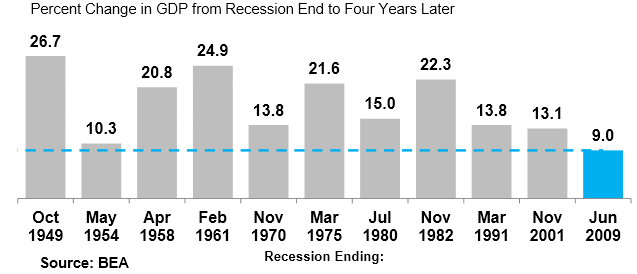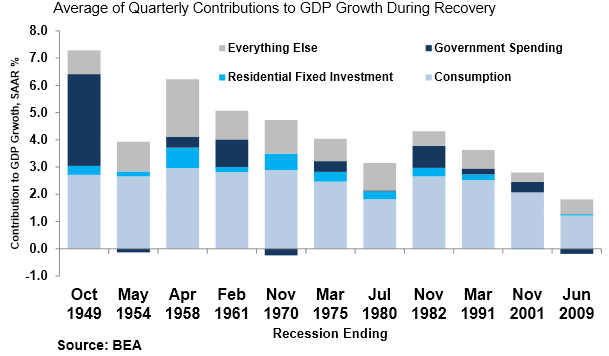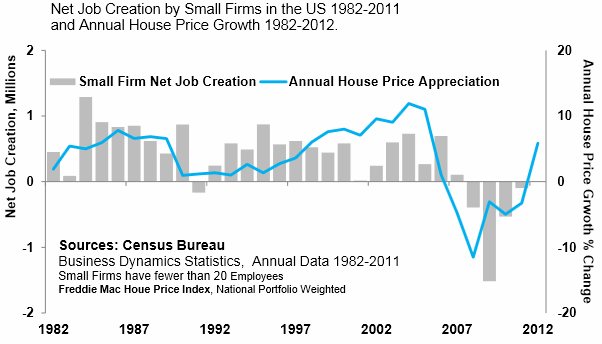In its August Economic and Housing Market Outlook Freddie Mac celebrates, sort of, a birthday. It was four years, at the end of June, since the recession officially ended. But four full years of data confirm that widely held perceptions about the recovery are true; real GDP growth has been slow and the recovery has been lackluster.
Freddie Mac Chief Economist Frank E. Nothaft and Deputy Chief Leonard Kiefer note that in the previous ten recessions GDP grew an average of 17.4 percent in the first four years of recovery; this time real GDP growth has been 9.0 percent, most closely resembling the downturn that began in May of 1954, a recession that double dipped.

So what is wrong this time? Nothaft and Kiefer point to the four components of overall growth; Consumption, Residential Fixed Investment, Government Spending, and Everything Else, a category that includes non-residential fixed investment, inventories and net exports. In this recovery government spending has been a net drag for the first time in over 40 years. The Stimulus helped government spending add 2 percentage points to growth in 2009 but its subsequent wind down, cutbacks by state and local governments, and further contractionary fiscal policy subtracted over 5 percentage points from GDP growth post 2009. Another factor, fixed residential investment was absent until recently. In prior recoveries this component led the expansion and helped to pull other sectors into recovery, adding about a quarter point to the GDP each quarter. This time the contribution has been one-fifth that. Third, consumption spending has added only about 1.2 percentage points to growth in contrast to the 2.5 point average in other recoveries.

But there is good news in the housing sector with solid growth in housing starts (up 18 percent), home sales (+13 percent) and national house price indices rising around 10 percent in the last year. A rapidly improving housing market, Freddie Mac Says, will help the economic recovery in at least three ways.
-
Increased demand for housing will help stimulate new single- and-multifamily construction and boost home sales The report projects housing starts to hover just below one million units (seasonally adjusted) during the first half of the year and to add approximately 3/8th of a percentage point directly to GDP growth. It will also help to employ many more people in construction and other housing-related jobs.
-
Rising home prices should help spur consumption spending by increasing the net wealth of families. As wealth rises families typically increase consumption spending and may even tap into the equity in their homes for either consumption or investment. Freddie Mac's second quarter refinance report found that the latter might already be happening with cash-out refinancing up from a year earlier.
-
Finally rising home prices will spur small business formation as business owners' homes often serves as collateral to start businesses. Small business growth has been very weak, actually subtracting from net job creation from 2008 through 2011,. Recent Census Bureau and University of Maryland research indicate that 42 percent of the decline in the performance of young firms relative to mature firms is due to decline in home prices.

Nothaft and Kiefer conclude by saying that the recovery as it passes its fourth birthday has yet to show maturity but may be ripe for a growth spurt. "And that economic growth will be fed by a continued rise in housing demand and property values, which in turn will stimulate job gains, consumption spending, and investment; some of the latter in small businesses."







